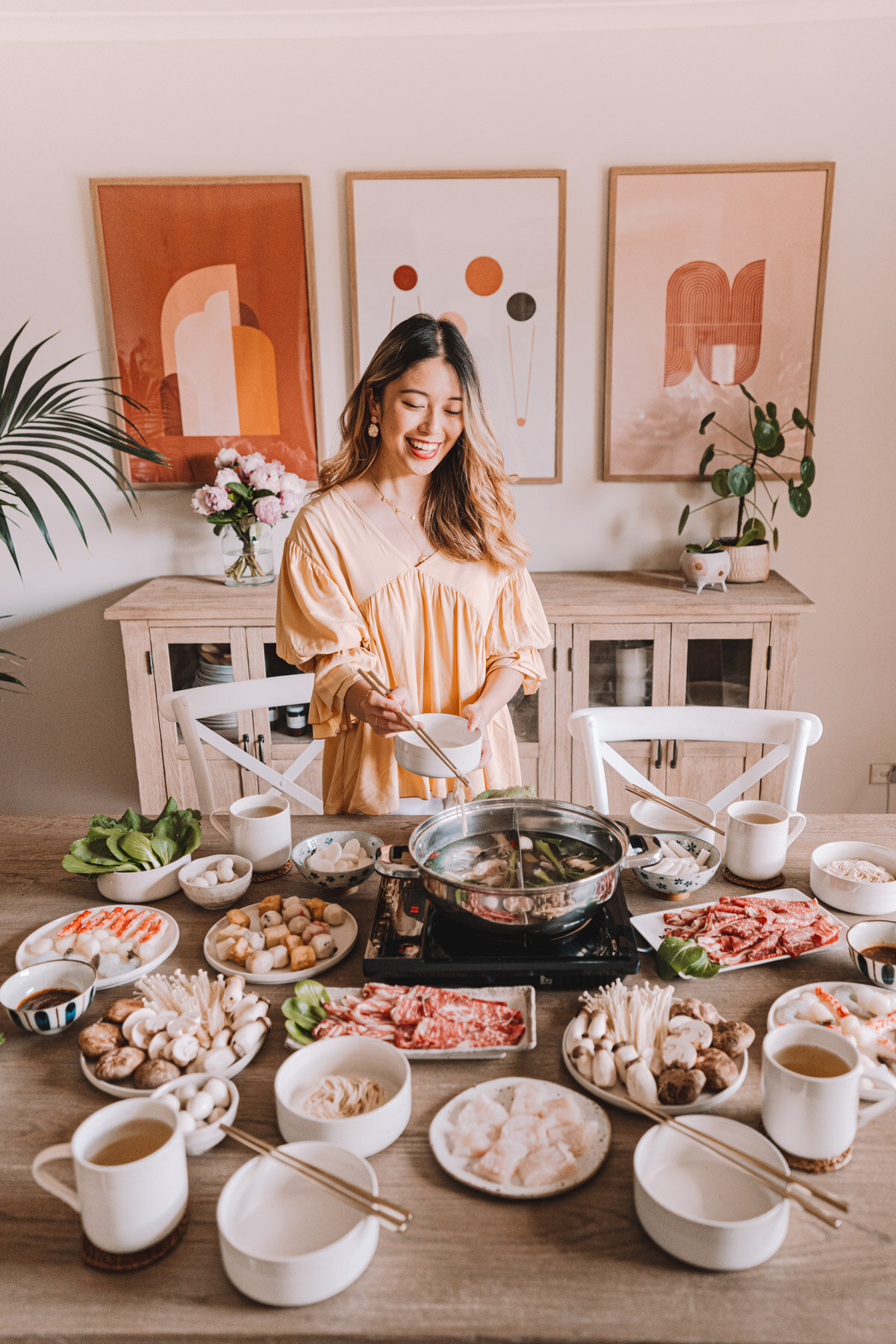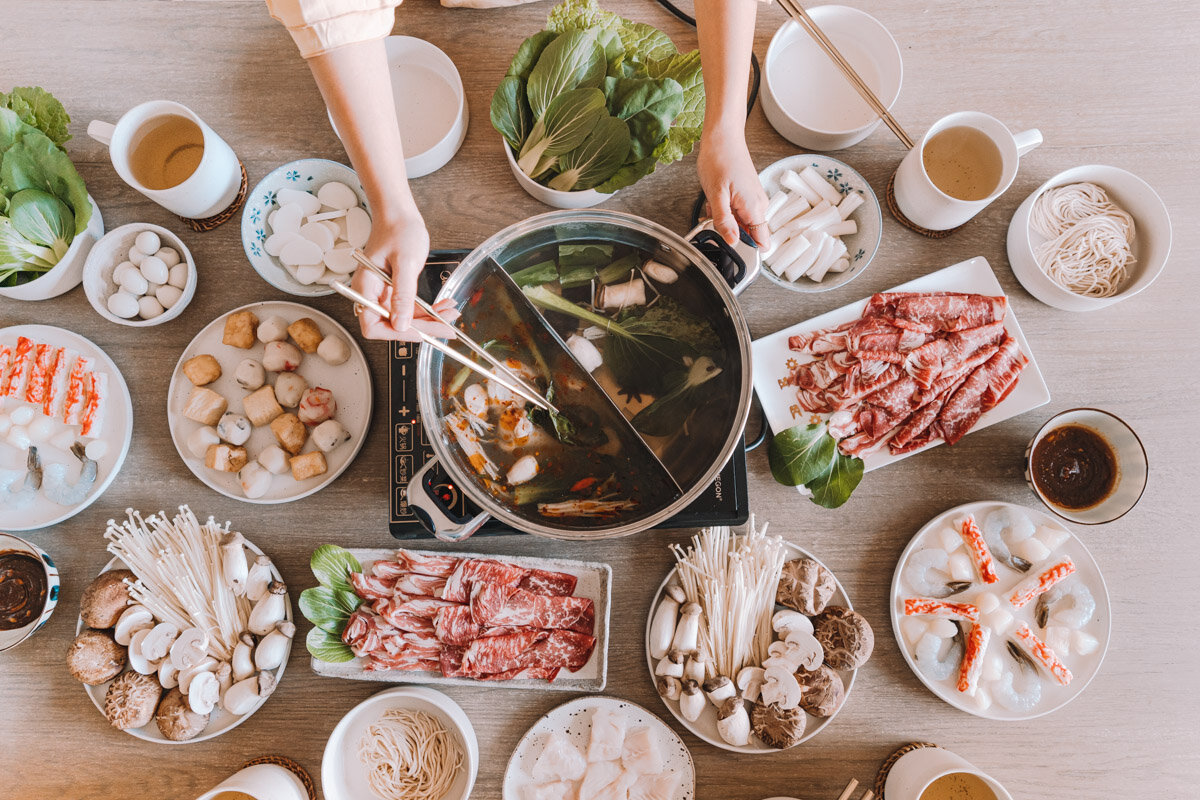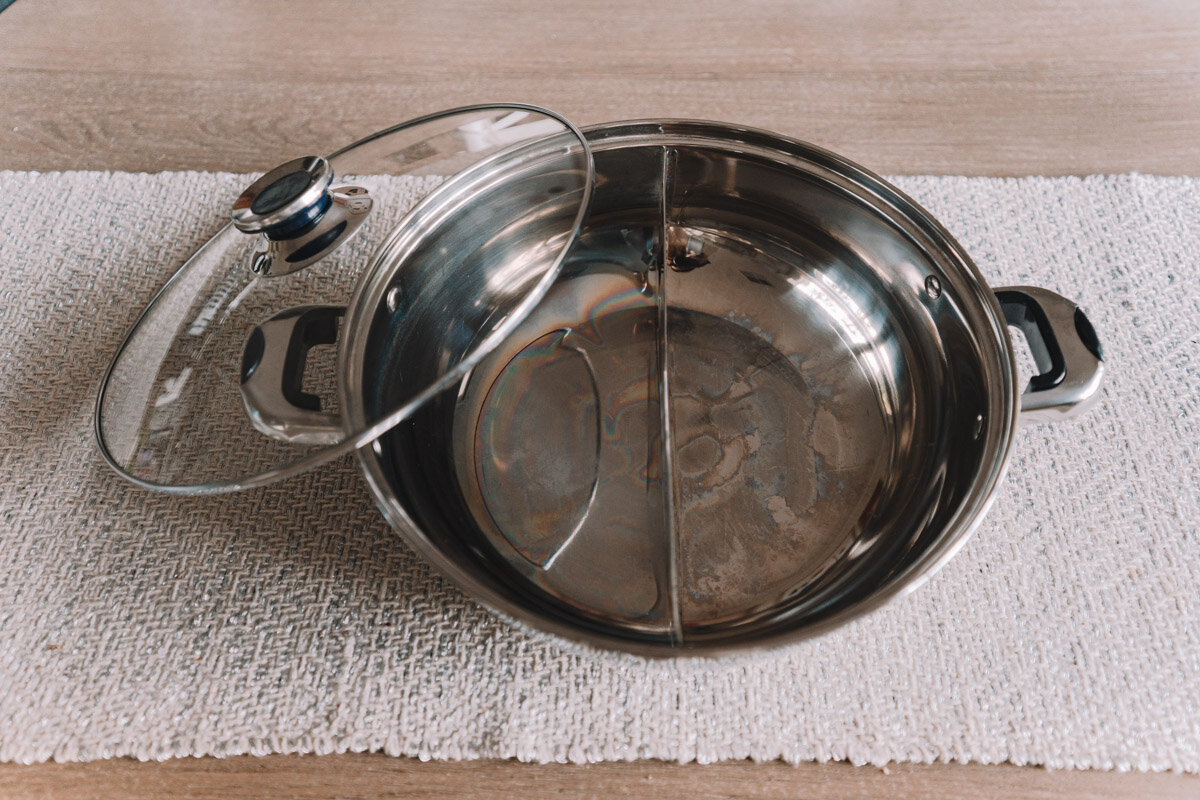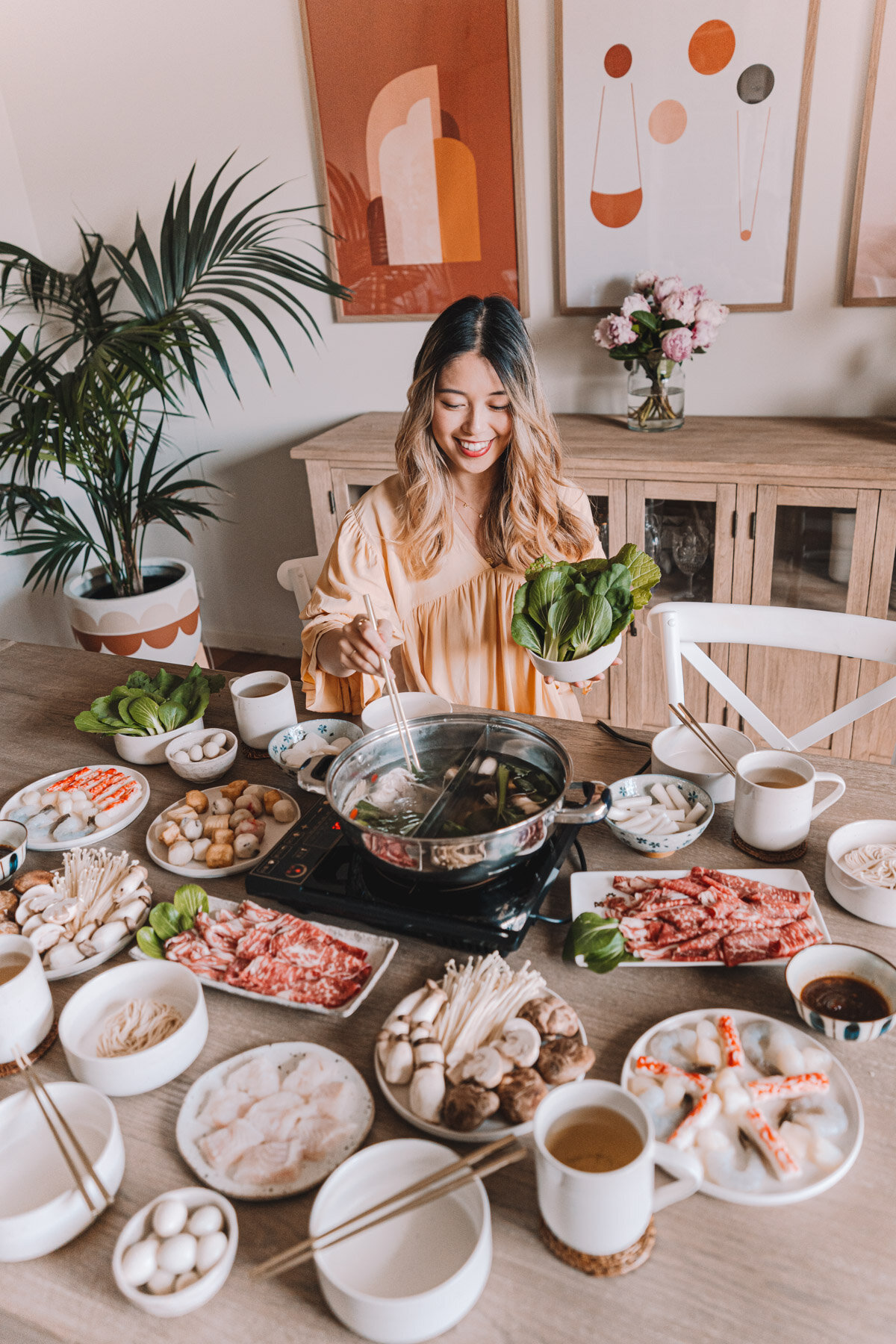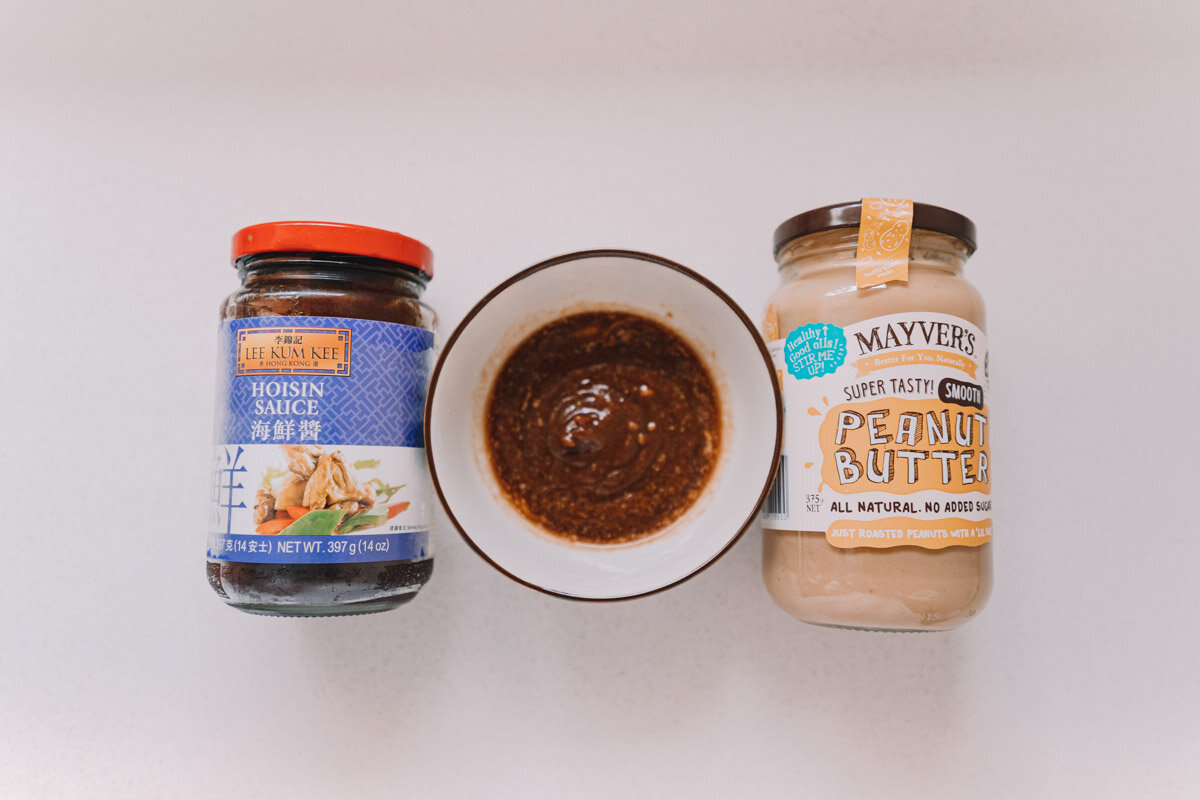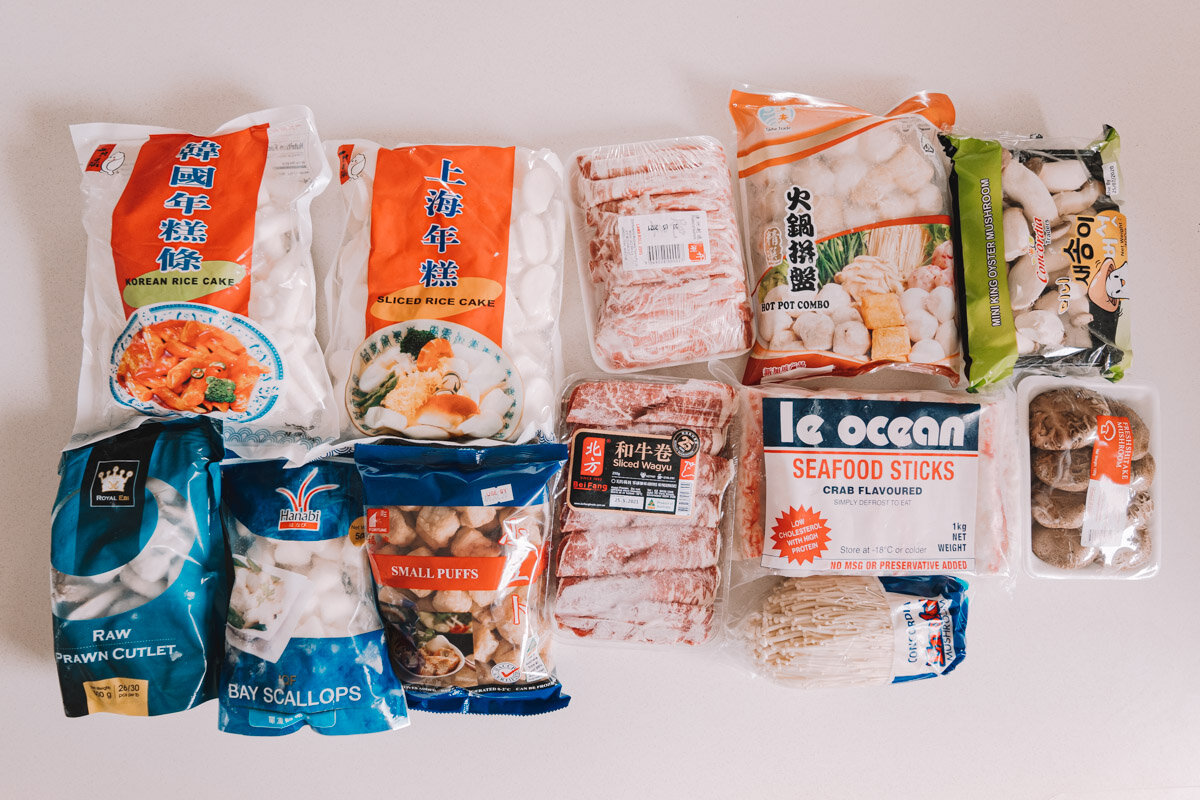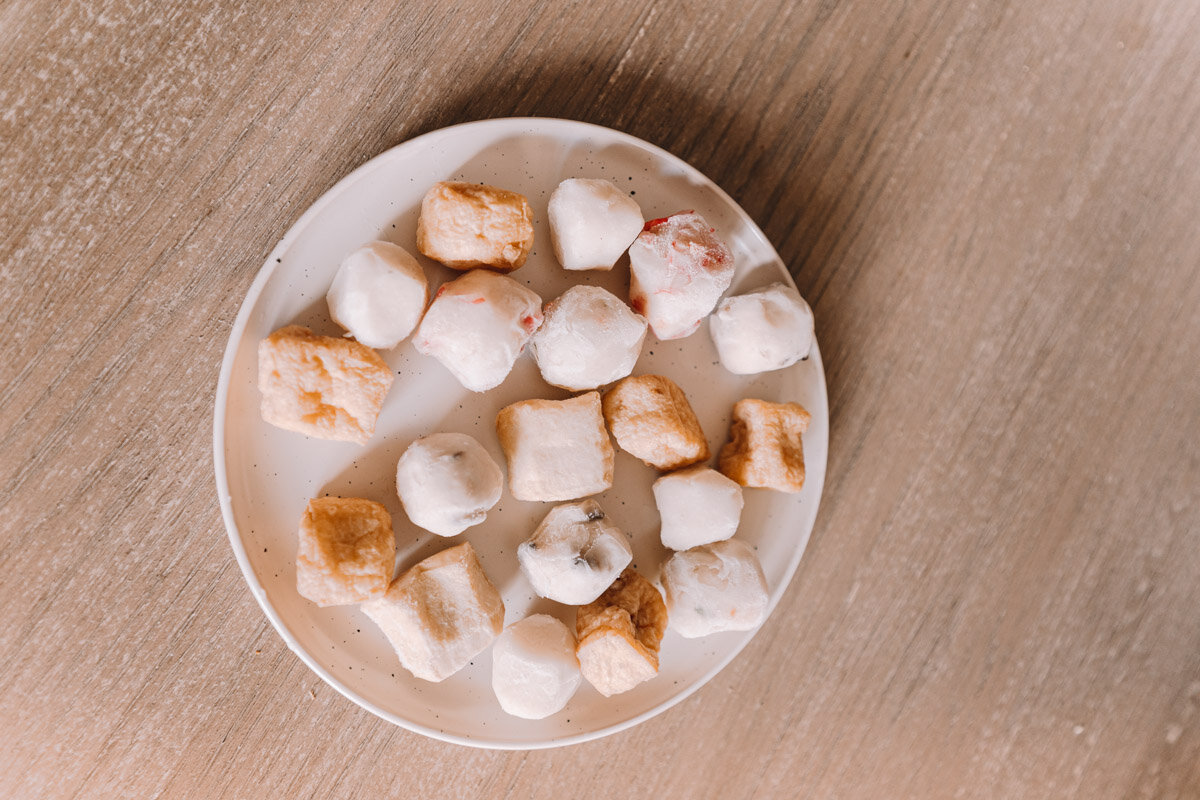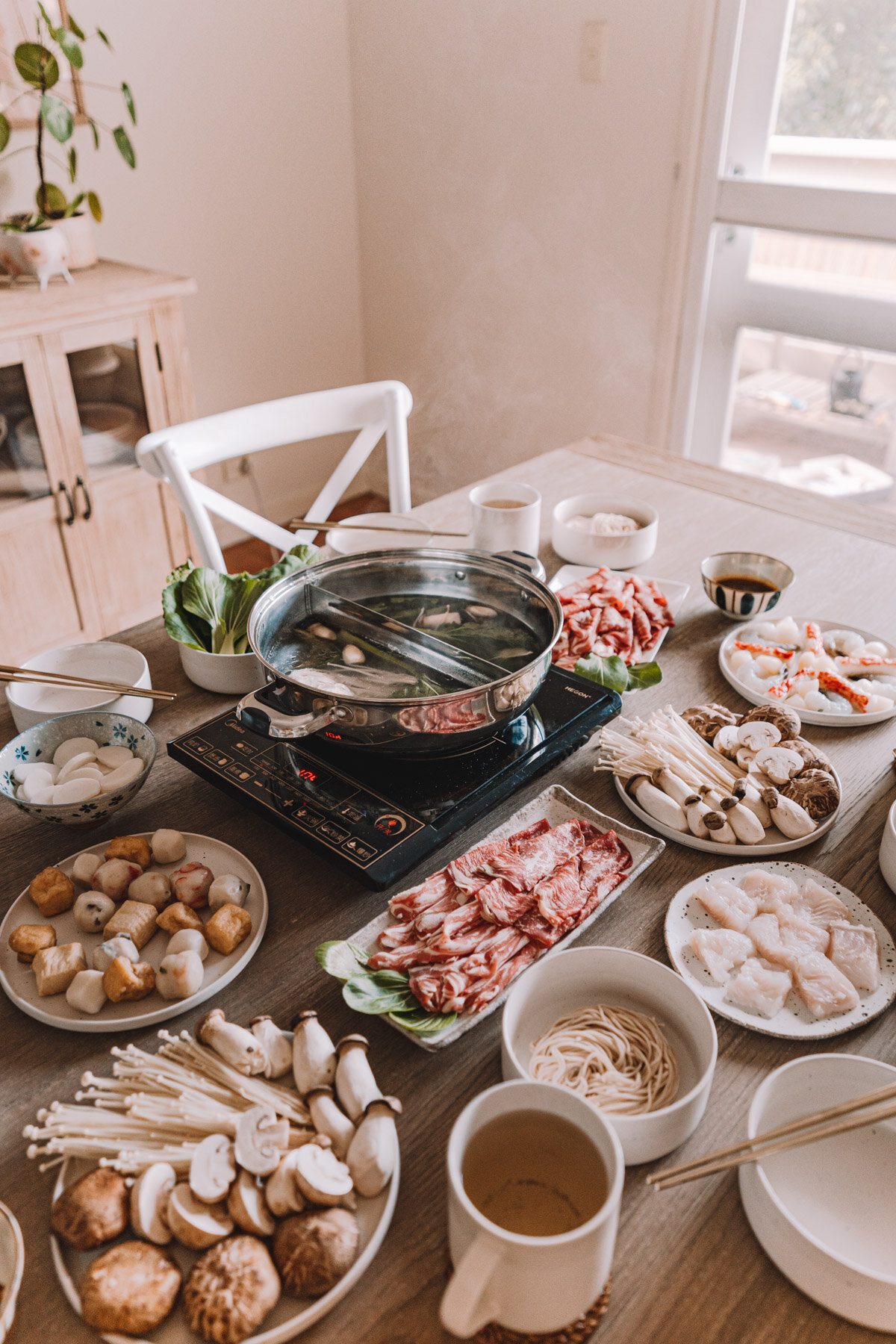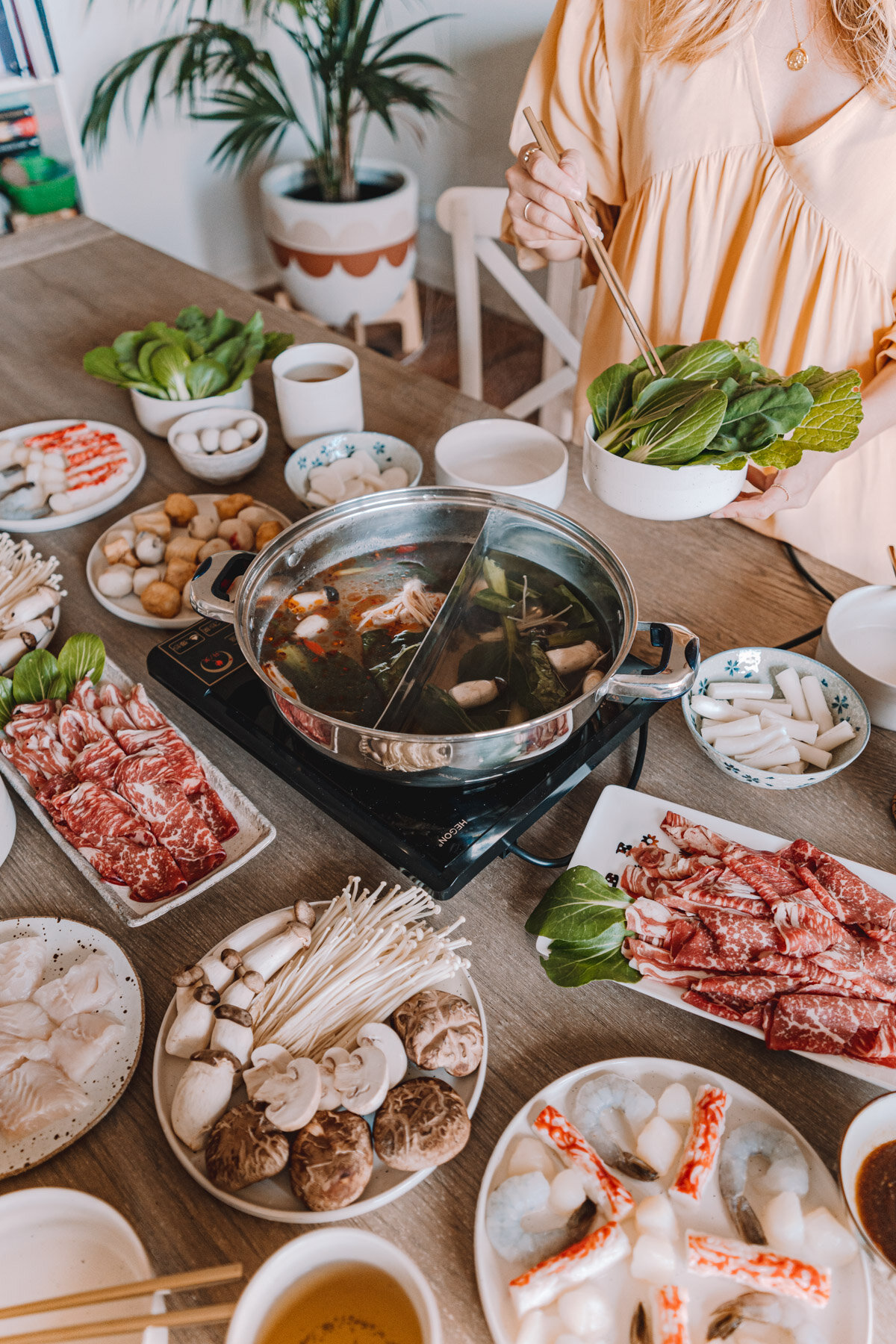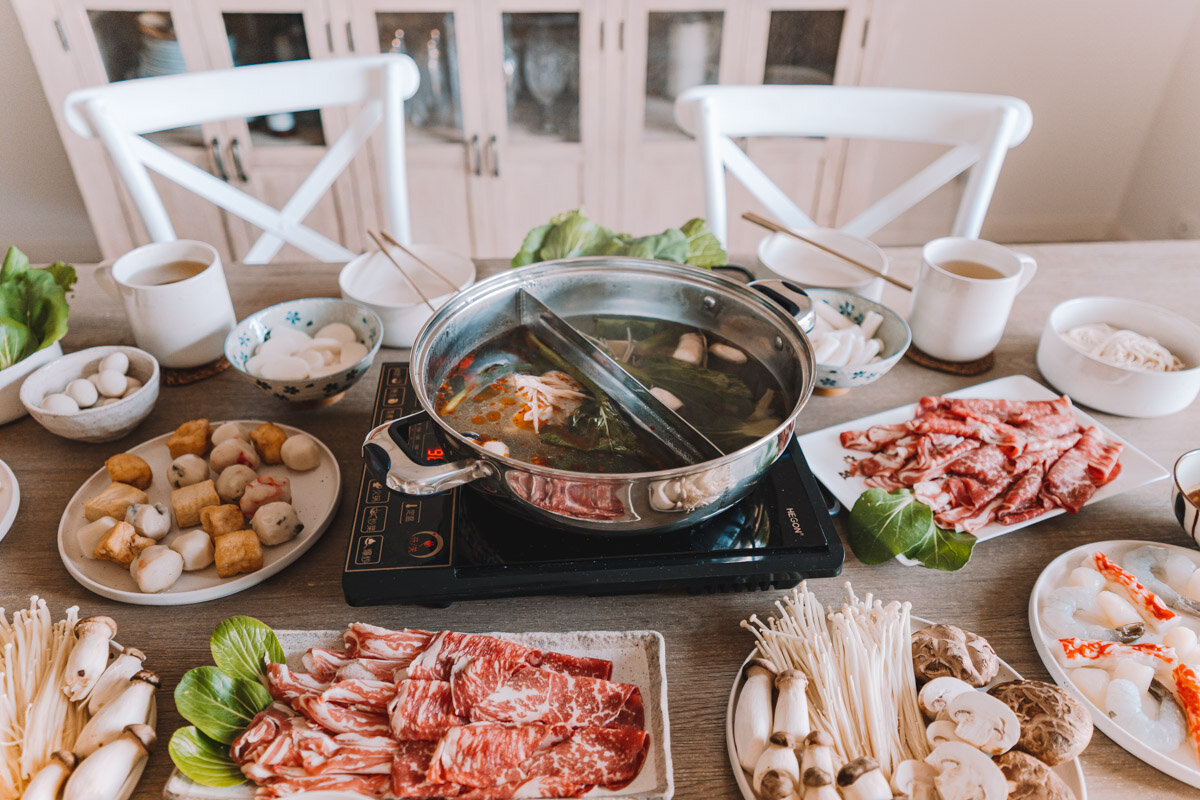How to Prepare Chinese Hot Pot (SteamBoat) At Home - The Ultimate Guide!
As the weather gets cooler, we find ourselves reaching for our hot pot stove more often. Winter time is the perfect time to huddle around the table to enjoy hot pot or steamboat (火锅), a Chinese cooking process where a simmering pot of soup sits is placed in the middle of the dining table surrounded by fresh, uncooked ingredients which guests place in the stove to cook and eat during the meal. Hot pot is a great meal to share with friends and family, however it’s also wonderful to have at home on a day to day basis as well. It’s a really versatile dish as you can use whichever ingredients you wish and it’s also a great way to clear out the fridge and leftover ingredients.
If you haven’t had hot pot at home before and are keen on the idea, read on below because today I’m going to share with you everything you need to know about how to prepare and have hot pot in the comfort of your home! I’ll be going through the equipment you’ll need, our tried and tested homemade soup stock (better than buying from the shops!), my absolute FAVE homemade hot pot sauce recipe, as well as a comprehensive list of ingredient ideas that you can use in your hot pot.
So let’s get started!
What Stove to use
When it comes to having hot pot at home, you’ll need a portable stove that you can place in the middle of your dining table. The two main options you can go for are either a gas stove or an induction stove.
We started off using a gas stove only because we couldn’t find an induction stove at the time. The gas stove we have is a $20 Kmart camping stove (similar to this one) and to run the hot pot, you’ll need to also get butane gas canisters. We use around one gas canister per hot pot dinner (I think it ran for about 1.5 hours max) and every time we used one I felt bad about wasting gas and canisters!
Recently, we’ve upgraded to a portable induction stove from IKEA after realising they do them. Prior to this most of the brands I came across were Chinese brands that were hard to track down or had only Chinese characters on them. The IKEA stove is called the TILLREDA portable induction hob. These cost more upfront ($59) than a gas stove however if I had to recommend one over the other, I would highly recommend induction stoves as they’re much easier to clean in that you just wipe down the surface + they’re more energy efficient (when using gas, up to 50% of the energy is lost in the process compared to induction where only about 10% of the energy escapes max - don’t ask me why I know this random fact!).
If you’re using an induction stove, you’ll need to connect it to power and if your dining table isn’t close to a power point, you’ll need an extension cord.
Pictured below left is our Kmart camping stove and on the right is our recent upgrade, the IKEA Tillreda induction hob - super recommend as a stove that’s a lot more accessible to purchase. The induction stove pictured in this post is an induction stove I use to borrow off my parents prior to getting our IKEA one - they got their one in China.
What Pot to use
When choosing a pot, go for a pot that is wide in diameter, but shallow in depth. That way, you’re able to see everything you place in your pot instead of digging around. This just makes for a much better hot pot experience.
You can either use one of your regular pots, or you can go fancy and get a split pot if you and your fellow hot potters want to have different soup bases (this is generally the case when one person likes spicy soup and the other just can’t hack the spice!)
Again, we started off with just using one of our regular pots we already had, but after realising hot pot was becoming a regular thing at home in winter, we invested in a split pot. Our one cost us around $30 from a local Asian grocery store and was compatible with induction stoves.
NOTE: If you’re using an induction stove make sure it has a magnetic base aka is compatible with induction stoves which use magnetic waves to transfer heat. If you’re not sure if your pot is induction friendly, take a fridge magnet and see if it sticks to the bottom of the pot. If it does, it’ll work on an induction stove.
ALL ABOUT SOUP BASES
The next thing you want to consider when making hot pot at home is what soup bases you’ll use. Many Asian grocery stores will stock a range of hot pot soup bases.
Buying pre-packaged soup bases are great for hot pot beginners but are packaged in plastic, often contain MSG, probably aren’t that healthy and are quite pricey for what they are ($4-5 a pack). In the past we would buy pre-packaged soup bases because #lazy but recently I’ve started creating our own, adapting my mum’s soup base recipe.
MY MUM’S SOUP BASE RECIPE
My very Chinese and traditional mother would never be caught buying a soup base for her hot pot, she always makes her own and it definitely tastes way better than store bought stuff!
SIMPLE NON-SPICY SOUP
2 Chicken drumsticks chopped up (or if you’re vegetarian/vegan, then 2-3 shiitake mushrooms)
5 Garlic cloves
1/2 teaspoon of Sichuan black pepper
1 star anise (optional, only if you have!)
A sprinkle of salt
WANT TO ADD SPICE?
Add fresh or dried chilli
HOW TO MAKE:
Fill your pot with water and add in the above ingredients
Bring to boil until chicken/shiitake mushrooms are cooked through.
Once cooked through, you can start your hot pot!
TIP: If you are using a gas stove, it’s better to bring the soup base to boil on the kitchen stove to not waste the butane gas canister.
My easy dipping sauce recipe
This is my go-to sauce recipe and everyone who has ever tried it LOVES it. Again, it’s an adaption of my mum’s recipe. She adds a lot more ingredients to it but I like to keep it simple to make hot pot easier to make for us (& you!) at home. And it only containers TWO ingredients. You’ll definitely want to try this below:
INGREDIENTS (MAKES ONE SERVING)
1 tbs hoisin sauce (vegan friendly)
1 tbs peanut butter
1 tbs water
HOW TO MAKE:
Add ingredients together and mix!
TYPICAL HOTPOT INGREDIENTS
The best part of hot pot is shopping for all the hot pot ingredients. When it comes to hot pot, you can really go for anything but the main thing to keep in mind is to make sure your ingredients are thin or can be sliced accordingly so that they’re quick to cook. That way, you won’t be sitting around the table all night long waiting for your food to cook.
Below is a list of ingredients that I recommend trying in your hot pot! For hot pot for two, we normally go for 2 meats, a plate of seafood, 2-3 greens, mushrooms, tofu and always crab sticks and korean rice cake sticks (the latter two are my favourite things when it comes to hot pot haha). But you can simply mix and match according to what you like best!
Meats
shaved meats (beef, lamb, pork) you can get these in asian stores - they’ll normally be in the frozen section and look like the below.
chicken breast pieces (we use this as a more healthier option as the shaved meats is often very fatty)
my mum goes one step further and shaves her own meat
Seafood
prawn & scallop (we buy frozen)
sliced fish fillets (we find these at the deli in Coles/Woolworths & just slice them in smaller easier to cook pieces)
crab-sticks (one of my FAVOURITE ingredients for hot pot - see below if you’re not familiar with the packaging!)
mussels, squid, octopus, calamari, etc.
Fishballs
Fish balls (& fish tofu) are super common hot pot ingredients. They’re personally not my favourite (possibly an unpopular opinion from a Chinese background person) as I don’t like the taste of them and find them a little plasticky, but some people LOVE them! You can find them in the frozen section in Asian grocery stores and you can find so many different types. They look like the pic below.
Veggies
Asian greens such as bok choy, pak choy, gai lan (chinese broccoli), wombok, michihilli, a veggie called ‘garland serrate leaf’ but I believe it’s labelled something else in Asian stores is also delicious. Basically anything you see in an Asian grocery
You can also try cabbage, broccolini, etc as long as you can cut it into small pieces so you don’t wait all night for your food to cook
Tofu
If you’re vegetarian or vegan, fear not! Chinese food is HUGE on tofu and I absolutely love how many different types of tofu are available. Look out for the below options when shopping!
firm tofu (the typical type you see in Coles, etc, sliced)
tofu skin (you buy this dried in a package)
tofu puffs (see below)
Mushrooms
oyster mushrooms
enoki mushrooms
button mushrooms
shiitake mushrooms
Carbs
Korean rice cakes (another favourite ingredient, it just soaks in the flavour so well)
Chinese sliced rice cakes (works just like korean rice sticks, I wouldn’t do both at the same time, they’re basically the same product different shape)
rice vermicilli noodles (a fave)
instant noodles (I break these into halves so you dont have to cook too much at a time)
homemade noodles (my parents have been making their own noodles lately, see below!)
Other
eggs
quail eggs (you can get these in tins)
dumplings & wontons (a super favourite ingredient)
HOW TO EAT HOT POT
Hot pot is sooo easy!
Once your pot is boiling, simply place your ingredients in the pot to cook
Remove when boiled / cooked through. For reference, slice meats only take 20 seconds, wontons are ready when they float - you’ll get the hang of it once you get started.
Then, dip in your dipping sauce & eat!
TIPS
As we’re dealing with lots of raw ingredients on the table, you’ll want to use a set of cutlery for handling raw items and another set for scooping/serving cooked items so that you don’t get sick from accidentally touching raw meat.
Though if you’re comfortable, you can dip your utensils in boiling soup to kill the germs so if you’re just having a small communal hotpot at home and don’t mind double dipping then you can skip out on the extra dish washing by making sure you dip your chopsticks in boiling water before handling cooked food.
Lastly, be sure to open some windows to ventilate the house as it can get steamy!
Hope you enjoyed this post, happy hot potting at home! I’m off to schedule in our next hot pot night!
PS our new dinnerware set which you see featured within this post is the Castlery Sand dinnerware set here and I finally found gorgeous gold chopsticks online, also from Castlery here.
